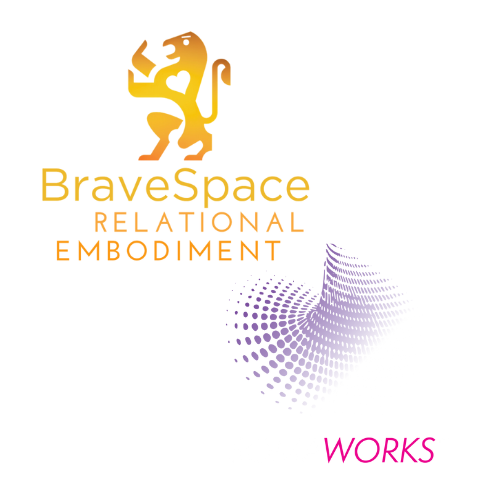Permaculture Dance Project
Permaculture Dance Project is the aesthetic result of investigating David Holmgren’s 12 principles of permaculture through movement. The movements we as a culture find “beautiful,” and worth practicing in the studio are based in our value systems and constructs. I often hear people claim that dancing bodies become broken down through the practice of dancing and performing. I don’t think this needs to be the case–choosing movement that sustains and increases the capacity of the body is possible just as permaculture shows that farming the land can increase rather than decrease its health and capacitance. The movement that results from such a goal has specific aesthetic properties, and relates to an emerging cultural value of sustainability.
Permaculture is a system of ecological design and engineering first defined by Bill Mollison and David Holmgren in the 1970’s. Most commonly applied to gardens and homesteads, the practices of permaculture are systems-oriented approaches to sustainably generating basic resources such a food and shelter. Permaculture systems often mimic naturally occurring ecologies to accomplish these intentional outcomes. Therefore, the study of ecology—a science examining the interrelationships between living systems—supports the practice of permaculture.
In Permaculture: Principles & pathways beyond sustainability (2002), David Holmgren posits 12 discreet principles for permaculture design. The principles weave together function and aesthetics, using the science of systems ecology as a basis for applied practice. Permaculture Dance Project is a dance film I created by investigating and presenting these principles in movement. The choreography of the film developed from examining how each principle could inform the functions and aesthetics of human movement. The presentation of the film draws similarly on the principles to define the relationships of bodies, environments, time, and space on screen. The aim of the film both as process and product was to explore permaculture through embodiment. Conversely, it has also been to learn about embodiment through the lens of permaculture.
Just as permaculture is supported by ecology, the embodiment of dance is supported by kinesiology. To study the embodiment of dance as a participant, however, is within the realm of somatics. A first-person phenomenology of dancing generates meaning from the objective body of kinesiology. Similarly, permaculture is an integrative system that weaves ecology with ethics, aesthetics, and practical intent to create a more subjective and interpretive framework. The overlay of somatics with permaculture offers an ecosomatic perspective. In defining ecosomatics, permaculture and somatics activist and scholar Nala Walla suggests that “The practice of ecosomatics heals the separation between mind, body, and earth by encouraging direct sensory perception of one’s body both in the natural environment and as the natural environment.” (Walla 2010,151) An ecosomatic perspective provides the basis for an embodied ecology: The experience of embodiment is about living systems, whether they be parts of oneself, relationships to others, or relationship to the world. From cells to cultures, each of these dynamics encompasses many living systems.
Applied to dancing, David Holmgren’s principles of permaculture frame an ecosomatic perspective. The below chart provides some links between the practices and operating principles of permaculture and somatics. For me, as a dancer and somatic practitioner, these principles have led me deeper into my embodied ecology, while also helping me connect aspects of self to others and my world. In total I seek practices and aesthetics that generate life, organizing resources to seek sustainable solutions for living in our world.
|
Principle |
Permaculture |
Somatics
|
|
Observe and interact |
Spend a year in a place before making big changes. |
Movement and sensation are continually interrelated. |
|
Catch and store energy |
Living systems gather resources from the environment, building capital. |
Knowledge, connectivity, and muscle are strengthened through temporal practice. |
|
Obtain a yield |
Balance power and efficiency to get something for one’s work. |
Soften and bond with the supporting surface to allow joint movement. |
|
Apply self-regulation and accept feedback |
Positive feedback loops are useful, and can also get out of control. |
Movement is an event that leads to consequences: How is/isn’t a particular pattern functional? |
|
Use and value renewable resources and services |
Invest non-renewables as catalysts to produce renewables. |
Muscle, sweat, and attention are renewable, while tendons, ligaments, and joint capsules are not. |
|
Produce no waste |
Close loops: Wastes of one system become resources of another. Maintain systems. |
Momentum and counterbalance are learnable skills. Maintain systems. |
|
Design from patterns to details |
Scale is the basis for perceiving patterns. Spirals are common in natural systems. |
Time is an integrative function of the soma. Movement is phrased. |
|
Integrate rather than segregate |
Each element of a system has many functions, and each function has many elements. |
Connectivity between parts and/or systems is what provides function (and expression). |
|
Use small and slow solutions |
Use appropriate technologies and scale for tasks to minimize the effect of failures. |
Change is facilitated by slowing automatic processes for observation. |
|
Use and value diversity |
Alternate pathways for essential services increases resilience. |
Specialized abilities develop based on structure and experience. |
|
Use edges and value the marginal |
Action takes place at the edges where systems overlap |
Reaching into space mobilizes. Contact with environment supports. |
|
Creatively use and respond to change |
Successional patterns (like seasons) tend to repeat in predictable ways. Set up intentional change. |
Stability and mobility interrelate in repeated patterns. Set up intentional change. |
References:
Holmgren, David (2002), Permaculture: Principles and Pathways Beyond
Sustainability, Victoria, Australia: Holmgren Design Services.
Walla, Nala (2010), ‘Body as Place: A Somatic Guide to Re-indigenization’, in Hope Beneath Our Feet: Restoring Our Place in the Natural World, Keogh, Martin (ed.), Berkeley, CA: North Atlantic Books, pp. 150-157.


0 comments